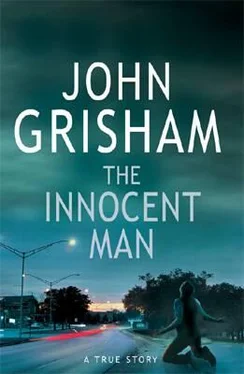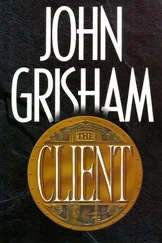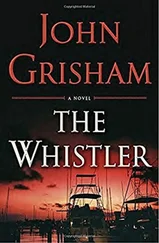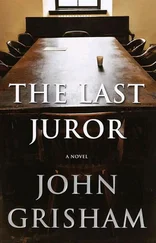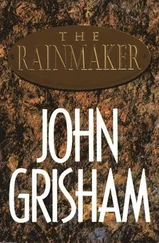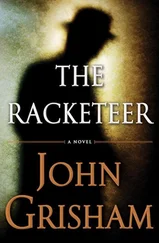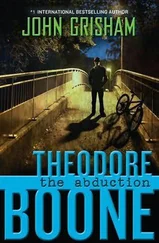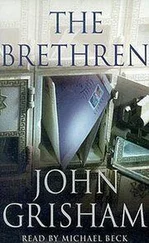After receiving numerous complaints about H Unit, in 1994 Amnesty International conducted a thorough evaluation of the place. It found many violations of international standards, including treaties adopted by the United States and minimum rules set forth by the United Nations. The violations included cells that were too small, inadequately furnished, unlit, unventilated, windowless, and without access to natural light. Not surprisingly, the exercise yards were found to be unduly restrictive and much too small. Many inmates skipped their one hour a day so they could have the privacy of the cell without their roommate. Other than a high school diploma course, there were no educational programs, nor were the inmates allowed to work. Religious services were restricted. Isolation of individual prisoners was too severe. The food service needed a thorough review.
In conclusion, Amnesty International found that conditions on H Unit amounted to cruel, inhuman, or degrading treatment in violation of international standards. The conditions, when "applied over a period of time, can have a detrimental effect on the physical and mental health of prisoners."
The report was issued, but was not binding on the prison. It did add fuel to some of the prisoner lawsuits that had been filed.
After a three-year hiatus, the death chamber machinery cranked up again. On March 20, 1995, Thomas Grasso, male white, age thirty-two, was executed after only two years on The Row. Though it had been difficult, Grasso was able to stop his appeals and get things over with.
Next came Roger Dale Stafford, the infamous steak-house murderer, who had one of the more notable executions. Mass murders in big cities draw more press, and Stafford went out in a blaze of glory. He'd spent fifteen years on death row, and his case was used by police and prosecutors and especially politicians as a prime example of the flaws in the appeals process.
On August 11, 1995, a bizarre execution took place. Robert Brecheen, a forty-year-old white male, barely made it to the death chamber. The day before, he swallowed a handful of painkillers that he had somehow smuggled in and stockpiled. His suicide was to be his final effort at telling the state to go to hell, but the state prevailed. Brecheen was found unconscious by the guards and rushed to the hospital, where his stomach was pumped and he was stabilized enough to get hauled back to H Unit for a proper killing. Judge Seay directed his staff through a tedious evaluation of every aspect of the Williamson case. They pored over the transcripts, which included the preliminary hearing and every other court appearance. They cataloged Ron's lengthy medical records. They studied the police files and reports from the OSBI experts.
The workload was divided among Vicky Hildebrand, Jim Payne, and Gail Seward. It became a group project, with no shortage of ideas and eagerness. The trial was rotten, a clear miscarriage of justice had occurred, and they wanted to correct it.
Judge Seay had never trusted hair evidence. He had once presided over a federal death penalty case in which the star witness was to be the FBI's top hair expert. His qualifications were beyond reproach and he'd testified many times, but Judge Seay was not impressed. The expert didn't testify and was sent away.
Vicky Hildebrand volunteered for the research on hair evidence. For months she read dozens of cases and studies and became convinced that it was all junk science. It was so wildly unreliable that it should never be used in any trial, a conclusion Judge Seay had long since reached.
Gail Seward concentrated on Barney Ward and the mistakes he made at trial. Jim Payne tackled the Brady issues. For months the team worked on little else, putting Williamson aside only to tend to pressing matters. There was no deadline on their work, but Judge Seay was a taskmaster who didn't tolerate an idle docket. They worked nights and weekends. They read and edited each other's work. As they peeled away more layers, they found more mistakes, and as the trial errors piled up, their enthusiasm increased.
Jim Payne had daily briefings with Judge Seay, who, as expected, offered no shortage of comments. He read the team's initial drafts, did his editing, sent them back for more work.
As it became obvious that a new trial would be ordered, the case began to bother Judge Seay. Barney was an old friend, an old warrior past his prime who would be deeply hurt by the criticism. How would Ada react to the news that their former judge had taken sides with the notorious killer Ron Williamson?
The team knew that their work would be scrutinized at the next level, at the Tenth Circuit Court of Appeals in Denver. What if they got reversed? Were they convinced enough in their cause? Could they argue so persuasively that the Tenth Circuit would be convinced? For almost a year, the team labored under the guidance of Judge Seay. Finally, on September 19, 1995, one year after the execution had been stayed, he issued a writ of habeas corpus and granted a new trial.
The opinion accompanying the order was exhaustive, one hundred pages long, and a masterpiece ofjudicial analysis and reasoning. In clear yet scholarly language, Judge Seay threw the book at Barney Ward, Bill Peterson, the Ada Police Department, and the OSBI, and though he held his fire on the unfortunate officiating by Judge Jones, he left little guesswork as to how he felt about it.
Ron deserved a new trial for many reasons, chief among them ineffective assistance of counsel. Barney's mistakes were numerous and harmful. They included the failure to raise the issue of his client's mental competency; failure to thoroughly investigate and present evidence against Glen Gore; failure to flesh out the fact that Terri Holland had also testified against Karl Fontenot and Tommy Ward; failure to inform the jury that Ricky Joe Simmons had confessed to the murder and had even done so on a videotape that Barney actually possessed; failure to attack Ron's confessions and suppress them before trial; and failure to call mitigating witnesses during the penalty phase.
Bill Peterson and the cops were faulted for hiding the 1983 video of Ron's second polygraph; using confessions obtained by questionable means, including Ron's dream confession; calling to the stand and putting under oath jailhouse snitches; presenting a case with almost no physical evidence; and sitting on exculpatory evidence.
Judge Seay analyzed the history of hair evidence and ruled, rather dramatically, that it was too unreliable and should be banned from all courts. He criticized the OSBI experts for their mishandling of the samples in the Fritz and Williamson investigation. Bill Peterson, Judge Jones, and Judge John David Miller were faulted for not stopping the proceedings and inquiring into Ron's mental health.
Judge Jones was wrong for holding a Brady hearing on exculpatory materials after the trial was over! His denial of Barney's request for a forensic expert to rebut the testimony from the OSBI gang was reversible error in itself.
With the precision of a surgeon, Judge Seay cut through every aspect of the trial and laid bare the mockery of Ron's conviction. Unlike the Oklahoma Court of Criminal Appeals, a tribunal that had examined the case twice, Judge Seay saw a bad conviction and questioned everything.
At the end of his opinion, he added something unusual-an epilogue. He wrote: While considering my decision in this case, I told a friend, a layman, I believed the facts and the law dictated that I must grant a new trial to a man who had been convicted and sentenced to death. My friend asked, "Is he a murderer?"
I replied simply, "We won't know until he receives a fair trial." God help us, if ever in this great country we turn our heads while people who have not had fair trials are executed. That almost happened in this case.
Читать дальше
